16+ Sample Appraisal Letter
-
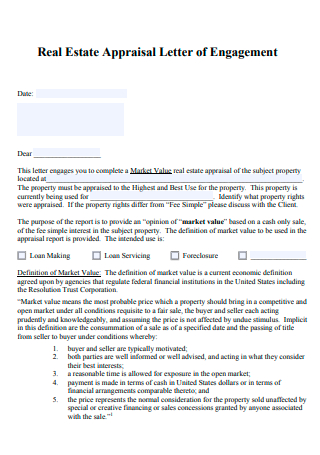
Real Estate Appraisal Letter of Engagement
download now -

Appraisal Transfer Letter
download now -
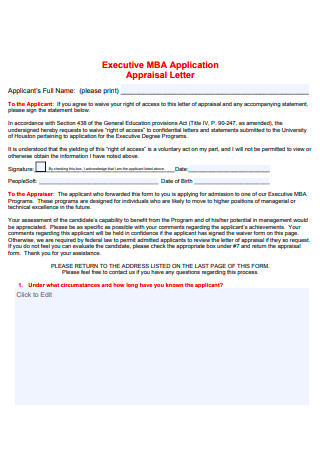
Executive MBA Application Appraisal Letter
download now -
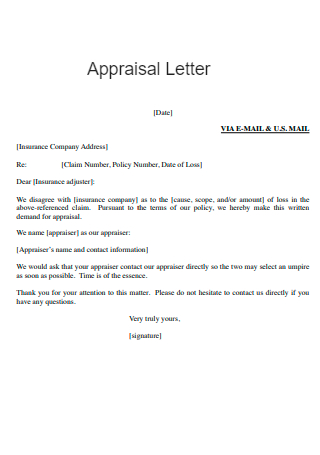
Appraisal Letter Example
download now -
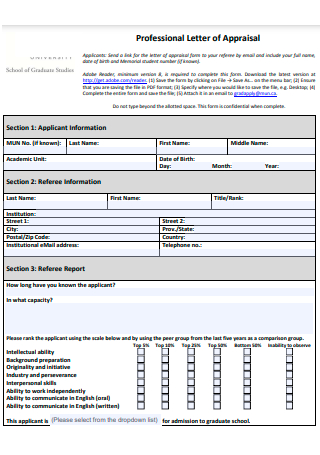
Professional Letter of Appraisal
download now -
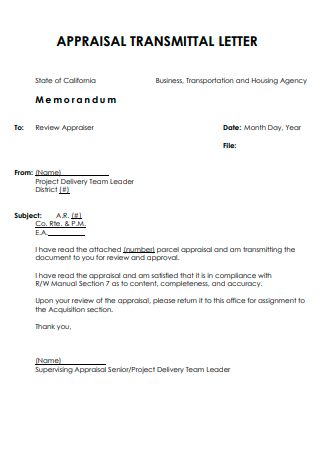
Appraisal Transmittal Letter
download now -
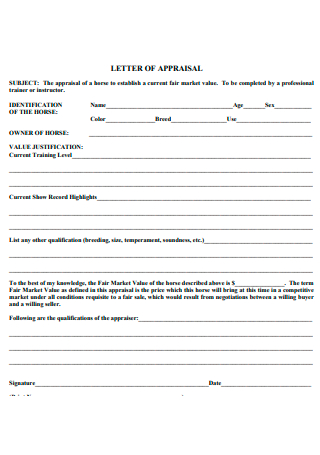
Basic Appraisal Letter
download now -
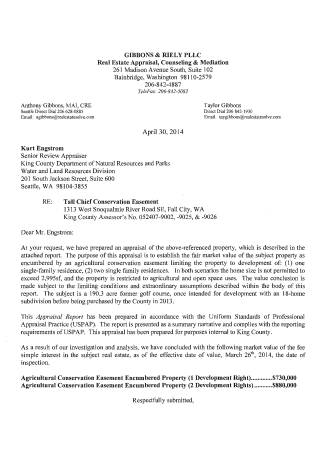
Real Estate Appraisal Letter
download now -

Sample Appraisal Letter
download now -
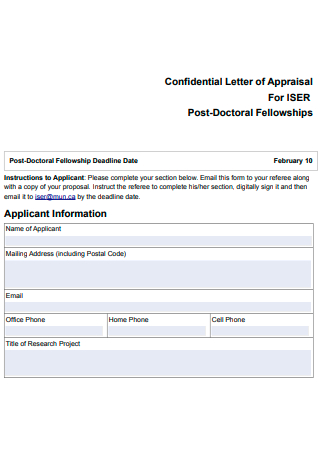
Confidential Appraisal Letter
download now -

Appraisal Institute Letter
download now -
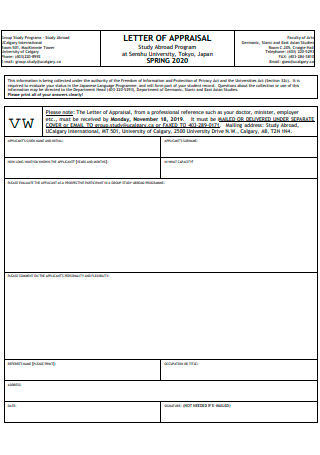
Appraisal Letter in PDF
download now -
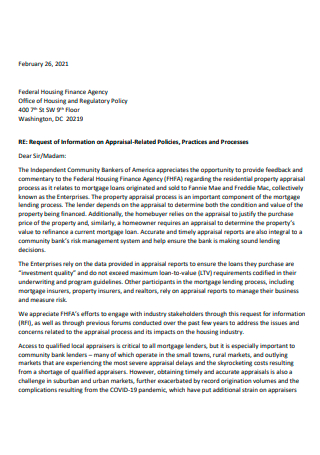
Standard Appraisal Letter
download now -
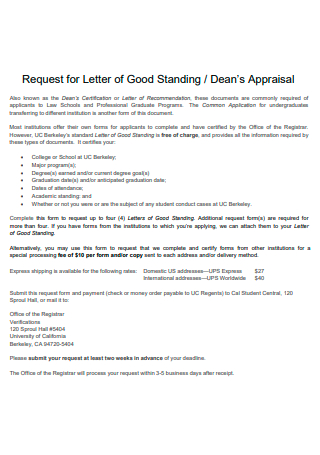
Appraisal Request For Letter
download now -
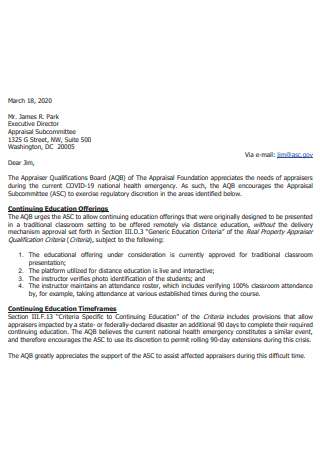
Printable Appraisal Letter
download now -

Parent Notification Health Appraisal Letter
download now -
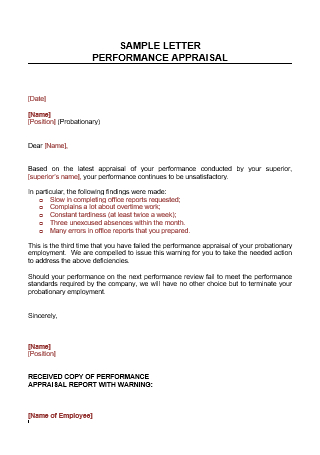
Sample Performance Appraisal Letter
download now
FREE Appraisal Letter s to Download
16+ Sample Appraisal Letter
What is an Appraisal Letter?
What is a Performance Appraisal?
What is the Objective of an Appraisal Letter?
What are the Performance Appraisal Methods?
What are the Issues That Come With Performance Appraisals?
How to Conduct a Performance Appraisal
FAQs
What is the critical incident method of a performance appraisal?
How do you write an appraisal letter?
What is the difference between an appraisal letter and an appreciation letter?
What is an Appraisal Letter?
To define, an appraisal letter is a business document which is written by the company’s HR department that contains written proof of achievements earned by an employee within a particular organization. An appraisal letter serves as an assessment or an act of examining an employee’s individual performances and evaluates their contributions during a specific period of time. An appraisal letter also talks about an employee’s strengths, weaknesses, and discusses the areas in which they can improve. More to that, the company can also use the data that is written inside the appraisal letter to justify demotions, issue promotions, and make incremental adjustments to the salary of an employee. Appraisal letters are usually issued per quarter, twice a year, or once a year. It is given to all employees of a company.
What is a Performance Appraisal?
A performance appraisal is defined as a term that refers to the regular review of the work performance of a certain employee along with their overall contributions to the company that they work for. The aim of a performance appraisal is to evaluate and assess the employee’s skills, achievements, and direction of their growth as an employee. Performance appraisals are usually designed by the HR department and it ensures that the employees are managing and meeting the goals that are expected of them by giving them guidance on how to reach those goals should they fall short of it. This document also lets managers create an appropriate action plan for their employees’ further development.
Also, since most companies or organizations only have a limited budget for performance-related incentives, a performance appraisal will be of big help to them in terms of properly allocating the budget. This is important so the companies can reward their top performers appropriately.
What is the Objective of an Appraisal Letter?
The objective of this document is to offer a balanced evaluation of an employee’s performance in a given period or in a year. The human resources department usually assigns a manager to discuss with an employee their improvements, future goals, any setbacks that occurred, as well as to inform the employee on what the company expects from them in the future. Positive appraisal can encourage an employee, improve their morale, and it also lets them grow personally and professionally.
What are the Performance Appraisal Methods?
Every organization or company uses different methods in giving performance appraisals to their employees. With that being said, here are the most common methods of a performance appraisal that can be noticed:
What are the Issues That Come With Performance Appraisals?
Performance appraisals can be an easy target for criticism, especially from employees who are not satisfied with what they have received or seen in the appraisal letter. It can also be ineffective when managers are not trained to do them properly. With that, here are most of the common issues on performance appraisals:
How to Conduct a Performance Appraisal
It should be up to the manager on how to lead performance appraisals and to ensure that the appraisal being conducted is effective and valuable. Here are some tips on how to lead a performance appraisal:
1. Prepare for the appraisal
It’s no secret, but it still needs to be said. As a manager who aims to conduct an effective appraisal, it pays to be properly prepared. In order to do this, you need to establish a clear objective for the appraisal meeting. A review of the previous appraisal notes from the employee can also be done, in order to gauge any changes in performance, how an employee handles any challenges faced, and if the remedies in the previous appraisal were applied and their corresponding effects on an employee’s performance.
2. Set an agenda
An effective agenda helps guide the direction of the discussion and also acts as an aid to make sure that everything that needs to be covered is covered. Since a performance review is never a single-way discussion, you as a manager should also send the agenda to the employee being reviewed and let him/her add more talking points. By sharing the agenda, it allows you and the employee to further prepare for the upcoming review.
3. Talk about the trials and triumphs
It is important to know during the discussion of the employee’s performance that you should relate it to the objectives and targets that they have set. You should also keep in mind as a manager that focusing on an employee’s areas that can be improved can be too much of a highlight. You should also discuss and reflect on the employee’s success and talk about how this can be spread across other areas of the employee’s work.
4. Talk about ideas for action and development
When you conduct a performance appraisal, it is important to note that the majority of it should be focused on an employee’s future development and action. While reflecting on the things that worked and didn’t work is also essential in an appraisal, it shouldn’t be the main focus. Instead, you discuss with the employee on ways to achieve their objectives and contribute more towards the goals of the company. You should also identify the employee’s plans for their career and any kind of skill set that they are willing to learn in order to have any performance improvement.
5. Discuss the actions that need to be taken
Keeping in mind the employee’s development, an effective action plan should be developed as the performance review comes to a conclusion. An effective plan contains actions and tasks that need to be achievable and should also contain deadlines to ensure that the growth and the development of the employee are properly facilitated.
6. Make a summary of the performance appraisal
As the performance appraisal approaches its conclusion, it is best to summarize any points that have been discussed during the review and also identify who is responsible for the appropriate actions that need to be taken in the future. It is also advisable to plan on when the next performance appraisal should be done. The importance of this is to give clarity to the employee and allow you as a manager to begin developing a consistent habit of giving feedback.
FAQs
What is the critical incident method of a performance appraisal?
This method of performance appraisal is based on any major workplace incidents that happened in the organization or company throughout the year. In this method, companies maintain logs of all the incidents that took place (it can be positive or negative) and use them as a basis at the end of the performance period to rate their respective employees.
How do you write an appraisal letter?
Here are the steps you can follow to write an effective appraisal letter:
- Keep the tone of the letter optimistic and professional
- Ensure that the content of the appraisal letter is clear and concise
- Begin the letter by writing the name of the employee and his/her position
- Start the main body of the letter in a positive manner, highlighting the areas in which the employee performed well
- Provide a fair, constructive criticism for any negatives and shortcomings that an employee has
- Provide tips and methods on how the employee can tackle their respective shortcomings and improve on it
- Include the employee’s salary details and any salary increments
- Include any achievements and performance-related incentives that the employee has received
- Mention if the employee has received a job promotion
- State the company’s expectations of the employee in the future
What is the difference between an appraisal letter and an appreciation letter?
An appraisal letter is a document that is used to assess an employee’s individual performance and evaluates their contributions during a given period of time. It can be given quarterly, twice a year, or once a year. Meanwhile, an appreciation letter is a document that is awarded to the employees to praise their outstanding performance. It is given to employees showcasing exceptional performance and is awarded to an employee at any point in time.
Appraisal letters can be considered as some kind of performance letters in a work environment. An effective appraisal letter shows the employees that their continuous efforts and hard work are appreciated by the company and elevates the bond between the manager and their employees. If employees are recognized accordingly, they will be much more motivated in giving their best in their job and this will reflect in more positive results for the company. For an employee, an appraisal letter can be used as a ladder towards his or her success in the company. In this article, examples of an effective appraisal letter can be found above and downloaded for personal use.
